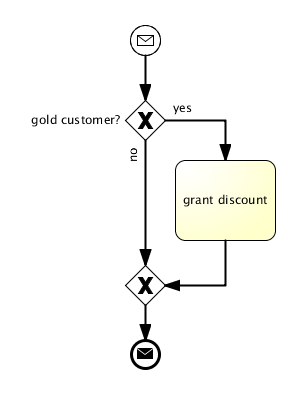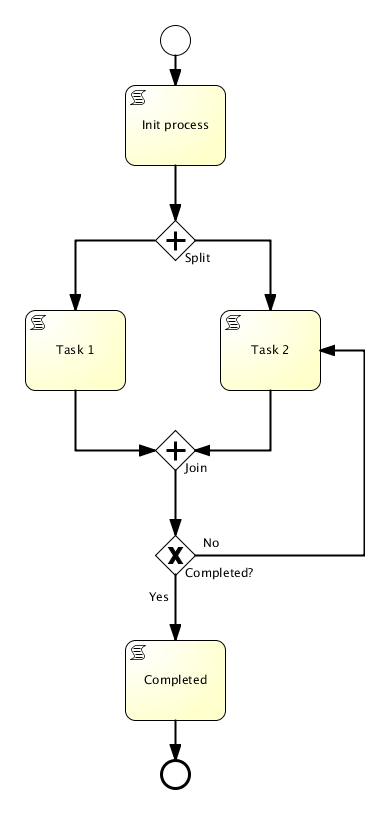It seems that that ServiceMix/Camel and Activiti are growing together as you can read in the blog post Supersize Activiti with Mule ESB and Apache Camel and Deploy Activiti as OSGi Bundles
Activiti has its roots in business process management, whereas Camel comes from the area of enterprise integration. Both allow to describe and automate processes. Activiti uses BPMN, a graphical modeling language with an XML representation for persistence and execution. Camel uses a textual DSL which can also be expressed in XML. Grahpical modeling is also possible with the Fuse IDE.
BPMN example:

The BPMN XML representation is not intended to be written directly and can be hard to read.
Camel example:
from("file://start")
.choice()
.when(header("goldCustomer").isEqualTo("true"))
.to("bean:processor?method=grantDiscount")
.to("direct:out")
.otherwise()
.to("direct:out");
from("direct:out")
.to("file://end");
Basically both examples are identical. The Camel example is more explicit and shows more technical details which are hidden in the BPMN example.
Especially non technical users tend to think that a graphical process notation is easier to understand because it looks better. It might be true for simple processes like the one above. But for more complex processes textual DSLs are often easier to write and understand.
Activiti and Camel overlap in many areas. Does it make sense to use them side by side anyway? I think yes, because neither Activiti nor Camel is complete in terms of features required by a fully featured SOA/BPM runtime. Actually they complement each other very well in some areas.
Unique features added by Camel:
- Connectivity / Adaptors to connect to external systems using a variety of different protocols
- Predefined EIP patterns for message routing
Unique features added by Activiti:
- Support for long running stateful processes
- Human workflow integration
In order to avoid unnecessary complexity it helps to recall the difference between mediation- and business processes which I descibed in my blog post from 2006.
For mediation processes Camel is appropriate in most cases, even long running processes can be executed as long as they are stateless. But if you need long running stateful processes and human interaction Activiti is an interesting option.
Both Camel and Activiti processes can be modeled using prescriptive and analytical BPMN. The software designer has the responsibility to decide which technology is appropriate for implementing the process. If this is not done right you will end up with unnecessary complexity, limited agility and maintainability.
It would be ideal to have an Open Source SOA/BPM Platform that enables end to end process automation without technology boundaries. As long as this is not available, combining Activiti and Camel is an interesting option. Proper solution design and differentiation of process types is key to create sustainable solutions.
